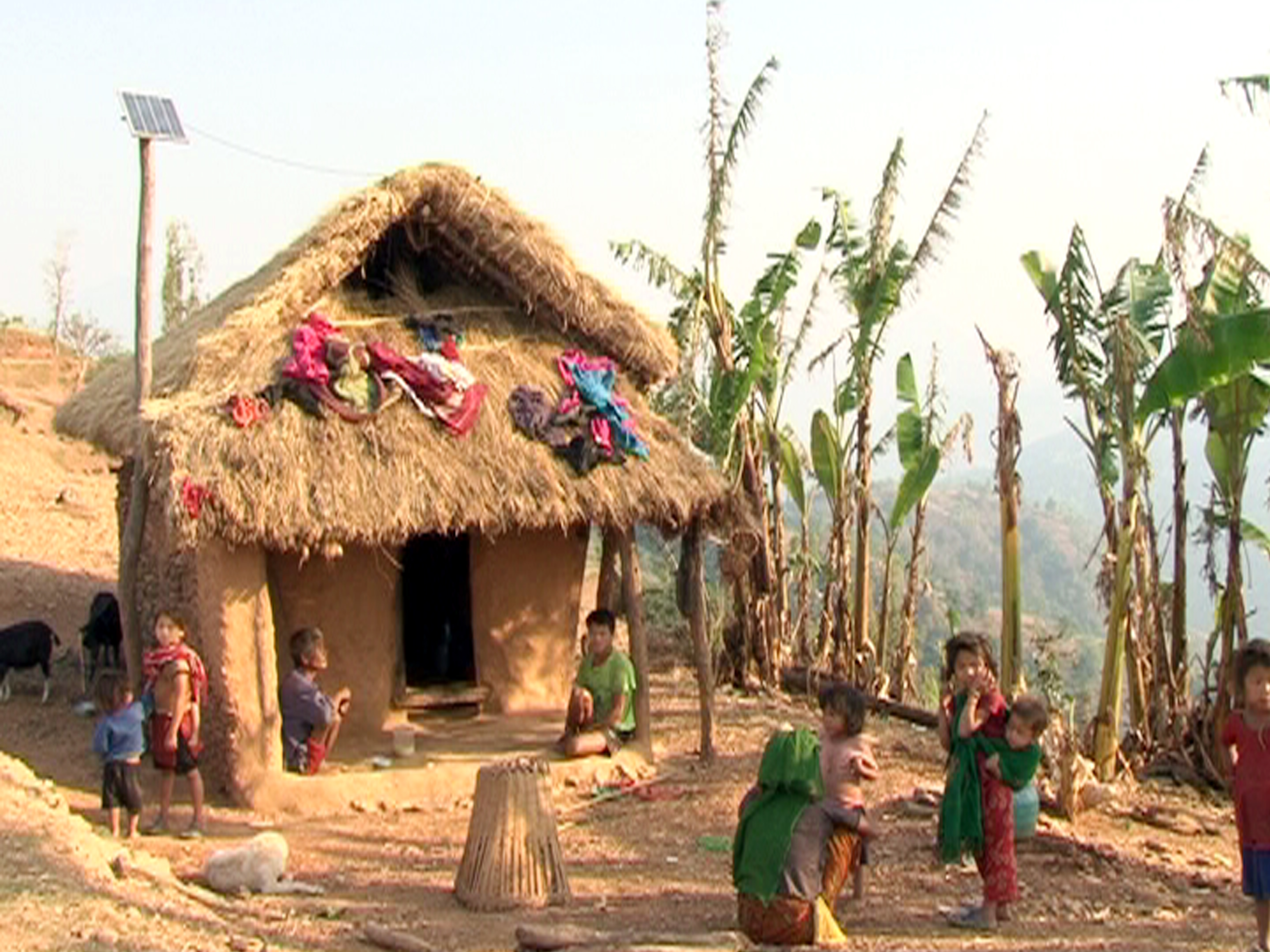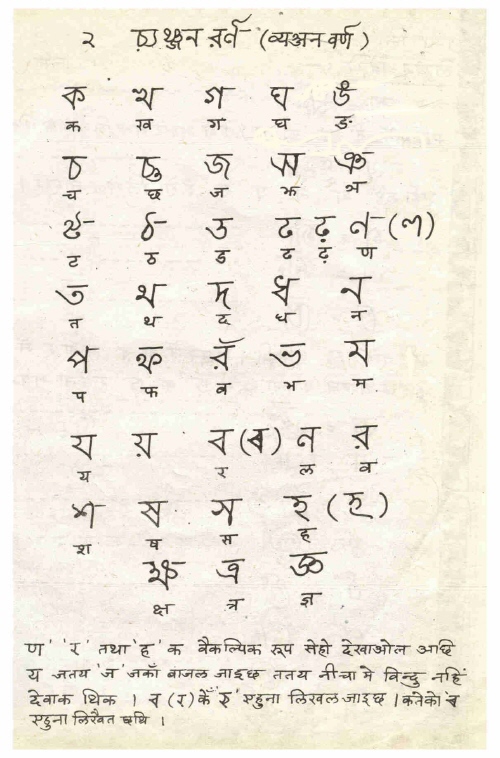|
Rapti Municipality
Rapti Municipality ( ne, राप्ति नगरपालिका) is a municipality which lies in Eastern part of Chitwan district in Bagmati Province of Nepal. It was formed as municipality in 2015 by merging five existing village development committees, Birendranagar VDC, Bhandara VDC, Piple VDC, Lothar VDC and Korak VDC. Total area of this municipality is 99.40 (Sq Km) and population of this municipality according to 2068 BS census is 46510. Prabha Baral and Iman Singh Lama are the first Mayor and Deputy mayor respectively elected by the Local election held in 2017. There are a total of 13 ward in the municipality. Demographics At the time of the 2011 Nepal census Rapti Municipality had a population of 59,937. Of these, 61.0% spoke Nepali, 15.4% Chepang, 12.8% Tamang, 6.1% Tharu, 0.9% Gurung, 0.9% Newar, 0.8% Darai, 0.7% Bhojpuri, 0.7% Magar, 0.2% Maithili, 0.1% Danuwar, 0.1% Kham, 0.1% Hindi, 0.1% Rai, and 0.1% other languages as their first language. In terms ... [...More Info...] [...Related Items...] OR: [Wikipedia] [Google] [Baidu] |
Municipality
A municipality is usually a single administrative division having municipal corporation, corporate status and powers of self-government or jurisdiction as granted by national and regional laws to which it is subordinate. The term ''municipality'' may also mean the governing body of a given municipality. A municipality is a general-purpose administrative subdivision, as opposed to a special district (United States), special-purpose district. The term is derived from French language, French and Latin language, Latin . The English language, English word ''municipality'' derives from the Latin social contract (derived from a word meaning "duty holders"), referring to the Latin communities that supplied Rome with troops in exchange for their own incorporation into the Roman state (granting Roman citizenship to the inhabitants) while permitting the communities to retain their own local governments (a limited autonomy). A municipality can be any political jurisdiction (area), jurisd ... [...More Info...] [...Related Items...] OR: [Wikipedia] [Google] [Baidu] |
Tharu Languages
The Tharu ( Tharu: थारु, hi, थरुवा) or Tharuhat ( ne, थरुहट) languages are any of the Indo-Aryan languages spoken by the Tharu people of the Terai region in Nepal, and neighboring regions of Uttarakhand, Uttar Pradesh and Bihar in India. Tharu languages are spoken in the Tharu community. This languages are similar to other neighboring languages. Tharu language is one of the major language spoken in Nepal. Although their own precise classification within Indo-Aryan remains uncertain, Tharu languages have superficial similarities with neighbouring languages such as Kumaoni, Awadhi, Maithili, Bengali, Rajbanshi and Bhojpuri. The lexicon of certain Tharu households is indicative of an archaic, 'indigenous' substratum, potentially predating both Sino-Tibetan or Indo-Aryan settlement. Tharu languages appear to be transitional within the context of Indo-Aryan. Chitwania Tharu is spoken by approximately 250,000 speakers east of the Gandaki River, in an ... [...More Info...] [...Related Items...] OR: [Wikipedia] [Google] [Baidu] |
Chepang People
The Chepang, also known as Chewang, are an Tibeto-Burman ethnic group from the rugged ridges of the Mahabharat mountain range of central Nepal.Beine, Caughley and Shrestha. 2012. Chepang Then and Now: Life and Change Among the Chepang of Nepal. Blurb Books. With increasing populations, lack of arable land and few irrigation options, malnutrition has been a historic problem for the Chepang despite forest supplements. The Chepang have often been characterized as the poorest of Nepal's poor. Forced teenage pregnancies are common. Chepang men and women are basically egalitarian and no social ranking exists as it does in caste Nepalese society. Many Chepang cannot read and write due to a lack of education beyond elementary school, and this illiteracy stands in contrast to the great gains Nepal has been making in reducing illiteracy. They are mostly located in Dhading District, Chitwan District, Gorkha District, Makwanpur District, and Tanahu District. Livelihood Over the past tw ... [...More Info...] [...Related Items...] OR: [Wikipedia] [Google] [Baidu] |
Tamang People
The Tamang (; Devanagari: तामाङ; ''tāmāṅ'') are an Tibeto-Burmese ethnic group of Nepal. In Nepal Tamang/Moormi people constitute 5.6% of the Nepalese population at over 1.3 million in 2001, increasing to 1,539,830 as of the 2011 census. Tamang people are also found in significant numbers in the Indian state of Sikkim and districts of Darjeeling and Kalimpong in West Bengal state of India and various districts in the southern foothills of the Kingdom of Bhutan. Such districts include the Tsirang District, the Dagana District, the Samtse District, the Chukha District, the Sarpang District and the Samdrup Jongkhar District. Emergent North-East : A Way Forward By H. C. Sadangi Tamang language is the fifth most-spoken language in Nepal. Etymology ''Tamang'' may be derived from the word ''Tamang'', where ''Ta'' means "horse" and ''Mak'' means "warrior" in Tibetan. However, there are no written documentations of Horse Riders. Some scientific research claims Tama ... [...More Info...] [...Related Items...] OR: [Wikipedia] [Google] [Baidu] |
Bahun
Bahun ( ne, बाहुन) or Khas Brahmin ( ne, खस ब्राह्मण) is a caste ( ''Varna'') among Khas people of Nepal. Their origins are from the Indo-Aryan Khasa tribe of Nepal and South Asia. According to the 2011 Nepal census, Bahun is the second most populous group after Chhetri, another Varna within the hill Hindus in Nepal. According to 1854 ''Muluki Ain'' (Nepalese Legal Code), Bahuns were regarded as caste among sacred thread bearers (Tagadhari) and twice-born Hindus. Origin Traditionally, Bahuns were members of the Khas community together with Chhetris and Hill Dalits. Possibly due to political power of the Khasa Malla kingdom, Khas Bahun and Khas Rajput (Chhetris) had high social status like plain Brahmins and Rajputs in the present-day western Nepal. Bahuns, regarded as upper class Khas group together with Chhetri, were associated mostly with the Gorkha Kingdom. Bahuns were original inhabitants of Karnali region of Nepal. The immigratio ... [...More Info...] [...Related Items...] OR: [Wikipedia] [Google] [Baidu] |
Kiranti Languages
The Kiranti languages are a major family of Sino-Tibetan languages spoken in Nepal and India (notably Sikkim, Darjeeling, Kalimpong, and Kumai) by the Kirati people. External relationships George van Driem had formerly proposed that the Kiranti languages were part of a Mahakiranti family, although specialists are not completely certain of either the existence of a Kiranti subgroup or its precise membership. LaPolla (2003), though, proposes that Kiranti may be part of a larger " Rung" group. Languages There are about two dozen Kiranti languages. The better known are Limbu, Sunuwar, Bantawa Rai, Chamling Rai, Khaling Rai, Bahing Rai, Yakkha language, Vayu, Dungmali Rai, Lohorung Rai and Kulung Rai. Kiranti verbs are not easily segmentable, due in large part to the presence of portmanteau morphemes, crowded affix strings, and extensive (and often nonintuitive) allomorphy. Classification Overall, Kiranti languages are: * Limbu * Eastern Kiranti ** Greate ... [...More Info...] [...Related Items...] OR: [Wikipedia] [Google] [Baidu] |
Hindi
Hindi (Devanāgarī: or , ), or more precisely Modern Standard Hindi (Devanagari: ), is an Indo-Aryan languages, Indo-Aryan language spoken chiefly in the Hindi Belt region encompassing parts of North India, northern, Central India, central, East India, eastern, and Western India, western India. Hindi has been described as a standard language, standardised and Sanskrit#Influence on other languages, Sanskritised Register (sociolinguistics), register of the Hindustani language, which itself is based primarily on the Old Hindi, Khariboli dialect of Delhi and neighbouring areas of North India. Hindi, written in the Devanagari script, is one of the two official languages of the Government of India, along with Indian English, English. It is an languages with official status in India, official language in nine states and three union territory, union territories and an additional official language in three other states. Hindi is also one of the 22 languages with official status in ... [...More Info...] [...Related Items...] OR: [Wikipedia] [Google] [Baidu] |
Magar Kham Language
Magar Kham (मगर खाम), also known as ''Kham'', ''Kham Magar'', and ''Khamkura'', is the Sino-Tibetan language variety of the Northern Magar people of Nepal. The language is situated in the upper elevations of Baglung, East Rukum, and Rolpa districts. Based on census data taken in 2011, the total population of Magar Kham is estimated to be about 69,000 speakers.Central Bureau of Statistics. (2014). National population and housing census 2011. Kathmandu: Government of Nepal. Language classification Magar Kham is a Sino-Tibetan language, and it is classified by David Bradley as “Central Himalayan,” and as being related to Magar and Chepang and more distantly related to the Kiranti languages. George van Driem also classifies Magar Kham as “Para-Kiranti,” emphasizing that Magar Kham, Magar, and Chepang are united more by their differences from the Kiranti cluster than by their similarity to one another. Within this cluster, Magar Kham possesses a number of ... [...More Info...] [...Related Items...] OR: [Wikipedia] [Google] [Baidu] |
Danwar Language
Danwar (also rendered ''Danuwar'', ''Denwar'', ''Dhanvar'', ''Dhanwar'') is a language spoken in parts of Nepal by an Indo-Aryan ethnic group of fifty thousand. It is close to Bote-Darai but otherwise unclassified within the Indo-Aryan languages The Indo-Aryan languages (or sometimes Indic languages) are a branch of the Indo-Iranian languages in the Indo-European language family. As of the early 21st century, they have more than 800 million speakers, primarily concentrated in India, Pa .... A variety called Danwar Rai, It is not related to the Rai of the Tibeto-Burman family. References Languages of Nepal Indo-Aryan languages {{IndoAryan-lang-stub ... [...More Info...] [...Related Items...] OR: [Wikipedia] [Google] [Baidu] |
Maithili Language
Maithili () is an Indo-Aryan language spoken in parts of Languages of India, India and Languages of Nepal, Nepal. It is native to the Mithila region, which encompasses parts of the Indian states of Bihar and Jharkhand as well as Nepal's eastern Terai. It is one of the 22 Eighth Schedule to the Constitution of India, officially recognised languages of India and the second most spoken Languages of Nepal, Nepalese language in Nepal. The language is predominantly written in Devanagari, but there were two other historically important scripts: Tirhuta script, Tirhuta, which has retained some use until the present, and Kaithi script, Kaithi. Official status In 2003, Maithili was included in the 8th Schedule, Eighth Schedule of the Indian Constitution as a recognised language of India, Indian language, which allows it to be used in education, government, and other official contexts in India. Maithili language is included as an optional paper in the Union Public Service Commission, UP ... [...More Info...] [...Related Items...] OR: [Wikipedia] [Google] [Baidu] |
Magar Language
Magar Dhut ( ne, मगर ढुट, ) is a Sino-Tibetan Language spoken mainly in Nepal, Southern Bhutan, and in Darjeeling and Sikkim, India, by the Magar people. It is divided into two groups (Eastern and Western) and further dialect divisions give distinct tribal identity. In Nepal 788,530 people speak the language. While the government of Nepal developed Magar language curricula, as provisioned by the constitution, the teaching materials have never successfully reached Magar schools, where most school instruction is in the Nepali language. It is not unusual for groups with their own language to feel that the "mother-tongue" is an essential part of identity. The Dhut Magar language is sometimes lumped with the Magar Kham language spoken further west in Bheri, Dhaulagiri, and Rapti zones. Although the two languages share many common words, they have major structural differences and are not mutually intelligible. Geographical distribution Western Magar Western Maga ... [...More Info...] [...Related Items...] OR: [Wikipedia] [Google] [Baidu] |



